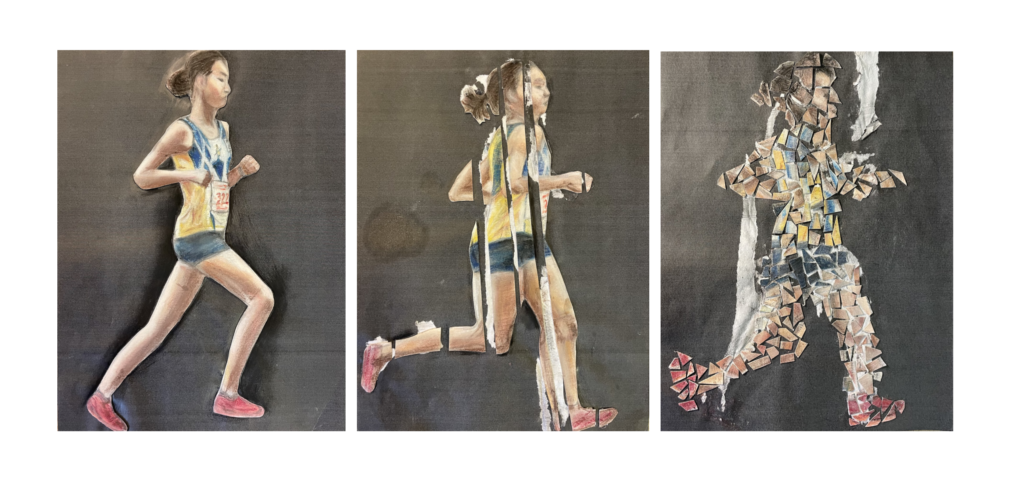
The sport of distance running is inherently structured around quantifiable measures. Running times, personal records, hours, mileage, and days – these records, quantify and come to govern runners’ lives. When this repetition, organization, and these performance measures feed into athletes’ lifestyles beyond running, the intensive expectations and culture of distance running can perpetuate a culture of underfueling and over-exercise. Coaching systems and running media further push an image of an ideal dedicated athlete feeding into unhealthy emotional and physical patterns among female distance runners.
Training Environment
The training environment has a significant impact in fostering culture beyond the sport. Mary Cain, championed mid-distance runner and American record-holder released a New York Times op-ed exposing her time at the Nike Oregon Project and the impact of the culture and training had on her both physically and emotionally. In the esteemed program, runners were weighed in front of another, their meals were monitored, and Cain’s days were structured out by coaching staff that failed to provide her with sufficient emotional support. Due to this training regimen, Cain broke five bones, lost her period, and self-harmed by cutting without any indication of concern from her coaching staff. The fact that this occurred within one of the most highly-regarded professional teams reveals how even elite running organizations have yet to recognize that operating under the myth that performance is solely based on the way a runner looks is destructive. Furthermore, this is the culture that young runners inevitably look up to.
Although athletics are making strides towards gender equality, there are still training regimens such as Cain’s that aren’t considering women’s bodies, so it is physically detrimental when they are held to these expectations.
Media and Running Foundations
In this digital age, where media and opinions spread rapidly and oftentimes unchecked, platforms and news sources can also perpetuate a toxic culture in conversations about the running world. Running commentators often remark on runners’ appearances on live television during broadcasted events and competitions, which unfortunately normalizes these remarks. Additionally, Letsrun.com, a blog where posters can comment on young women’s bodies behind the guise of anonymity, is incredibly harmful to the young athletes and readers. Female athletes are more likely to experience detriments to health and self image because media representation generally continues to fixate more on female beauty ideals.
Self-Image
When visualizing a distance runner, many imagine someone muscular and lean, oftentimes to an unrealistic degree. As a result of this implicit standard, disordered eating patterns in female runners have become increasingly prevalent, with upwards of 21% of endurance athletes experiencing an eating disorder (Fahrenholtz 2022). As someone who began running in middle school, a time that was crucial to both physical and emotional development, I only recently recognized that the structured focus of the sport I placed on hitting times and personal records seeped into the lifestyle I tried to maintain. In that span of several years, my food intake became restricted, I became obsessed with my body image, and my general perception of myself relied greater and greater on my performance as an athlete and accompanying physical attributes.
This is no individual issue in the sport– girls on my high school team had similar conversations in the locker room and with each other, discussing eating behaviors in tandem with training. And unfortunately, this commonly manifests in eating disorders: Anorexia nervosa and bulimia nervosa run prevalent, as many turn to regulating food intake to a dangerous extent. These pervasive ideas that runners have to appear a certain way are unhealthy and fail to celebrate differences, because of people’s body types and how they can all thrive in the sport. (Kantanista 2018)
Athletic Identity
Due to sheer time and energy commitment they demand, athletics often becomes part of an individual’s identity beyond just an activity they take part in. Those who have a high athletic identity associate themselves strongly with the sport to the point where their self esteem and energy depend on it (Turton 2017).
In relation to distance running, a sport inherently shaped by commitment in terms of mileage and days run, missing training leads to feelings of guilt, driving those to overcompensate through overexercise (Hernandez 2021).
Moving Forward…
It seems that the sport and surrounding community are moving towards a healthier space, as in recent years they have been making strides towards more athletes vocalizing their experiences and addressing concerns. Through this vulnerability and openness, we’ve created a space for conversations to continue.
References
Fahrenholtz, I. L., Melin, A. K., Wasserfurth, P., Stenling, A., Logue, D., Garthe, I., Koehler, K., Gräfnings, M., Lichtenstein, M. B., Madigan, S., & Torstveit, M. K. (1AD, January 1). Risk of low energy availability, disordered eating, exercise addiction, and food intolerances in female endurance athletes. Frontiers. Retrieved November 13, 2022, from https://www.frontiersin.org/articles/10.3389/fspor.2022.869594/full
Gorrell, S., Scharmer, C., Kinasz, K., & Anderson, D. (2020). Compulsive exercise and weight suppression: Associations with eating pathology in distance runners. Eating Behaviors, 36, 101358. https://doi.org/10.1016/j.eatbeh.2019.101358
Kantanista, A., Glapa, A., Banio, A., Firek, W., Ingarden, A., Malchrowicz-Mośko, E., Markiewicz, P., Płoszaj, K., Ingarden, M., & Maćkowiak, Z. (2018). Body image of highly trained female athletes engaged in different types of sport. BioMed Research International, 2018, 1–8. https://doi.org/10.1155/2018/6835751
Monserrat Hernández, M., Arjona Garrido, Á., Checa Olmos, J. C., & Salguero García, D. (2021). Relationship between negative running addiction and eating disorder patterns in runners. Nutrients, 13(12), 4344. https://doi.org/10.3390/nu13124344
Turton, R., Goodwin, H., & Meyer, C. (2017). Athletic identity, compulsive exercise and eating psychopathology in long-distance runners. Eating Behaviors, 26, 129–132. https://doi.org/10.1016/j.eatbeh.2017.03.001